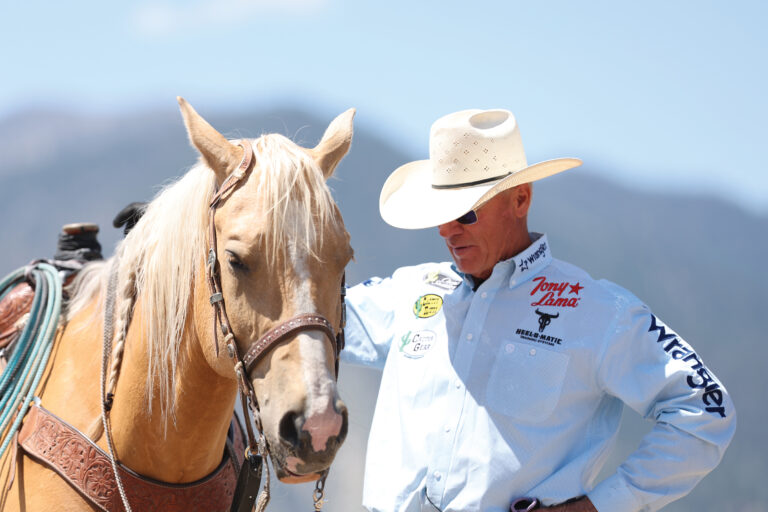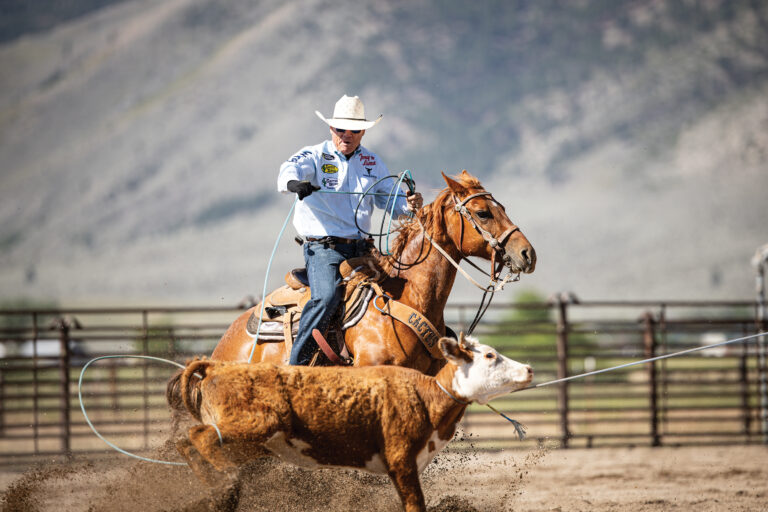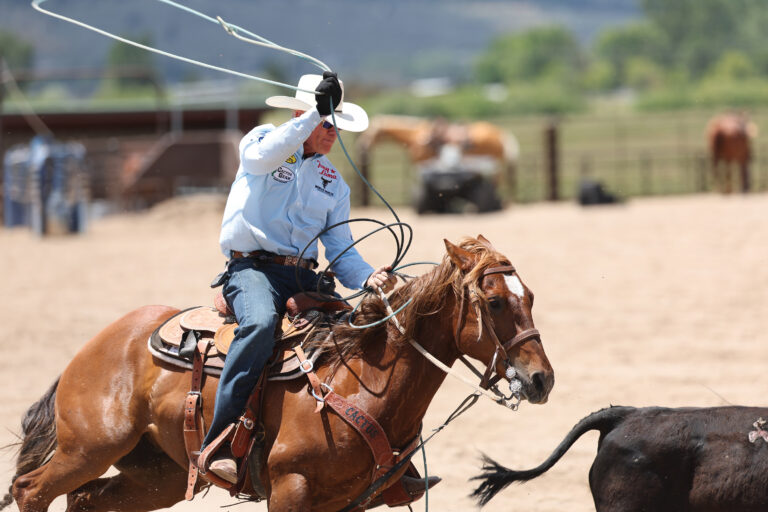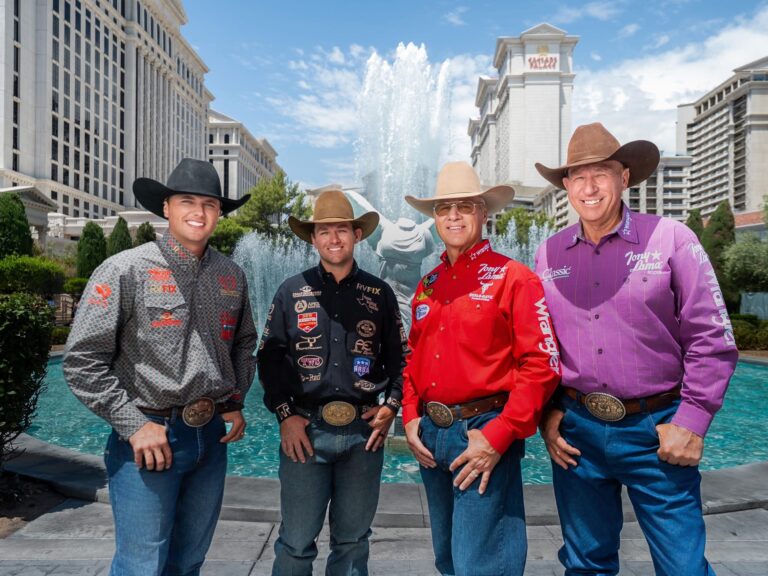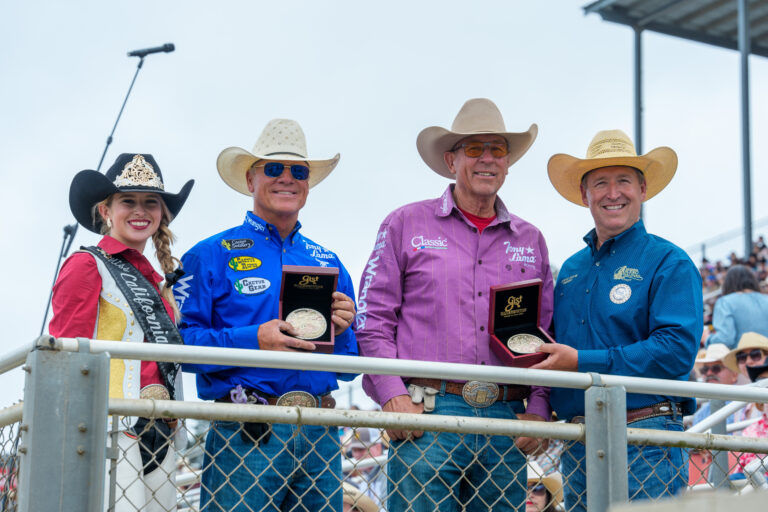A heeler’s job is to rope two feet, obviously, and a heeler has to have a relatively consistent way of getting good position because of the way the heel loop works. Good heelers have a system or plan on how to read the header, the corner and what the steer’s doing, and be able to hit their position at the right time consistently in order to produce the same shot. Heelers tend to be a little bit more horsemanship minded control-wise, and tend to work with their horses more than the average header. Don’t get me wrong. The top echelon of headers take their horsemanship skills to another level and that’s why they’re on top. They really work at it.
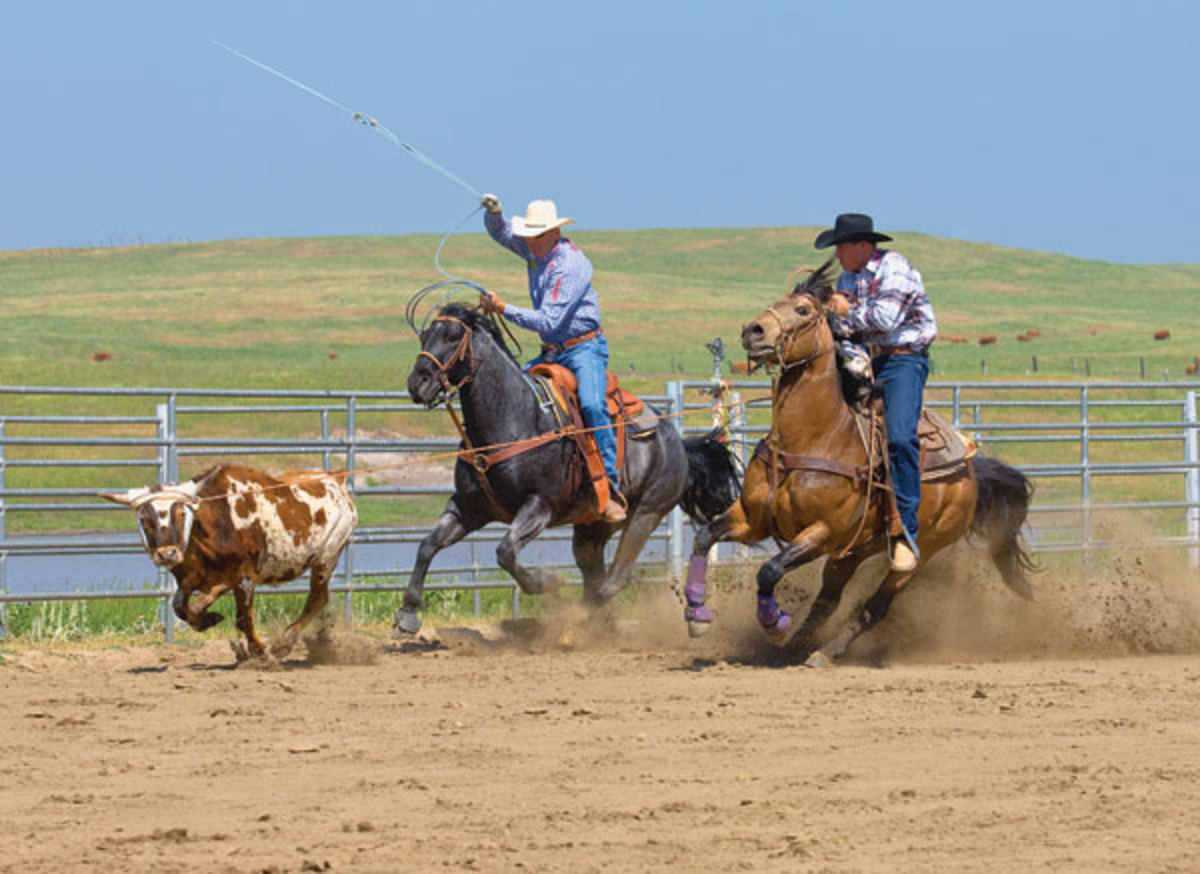
All heelers really need to keep their horses under control. You can’t get there too early or too late. When the steer’s turned, you have to hit your position at that moment. You and your horse have to have a working relationship, so throughout the run he’s right where he needs to be.

If you have a horse with a lot of ability that really wants to work, you sometimes run into a problem with that aggression. He’s wanting to do what comes naturally to him, which is to get to the steer. The majority of the consistent heelers over the years—guys like Rich Skelton, Allen Bach and now Jade Corkill—are guys who really keep their horses under control distance-wise to the steer, to where they can really calculate their entry. They create a smooth transition into the corner and can keep good balance and control in their swing. Every element is in place, and that comes from being able to control their horses coming down the arena and into the turn, and having their horses in a really good pattern. Their bodies and minds are in control.
There are so many guys out there with so much roping talent that they can make shots from different positions. But if you watch over the years, the guys who stay at the top are the guys who’ve figured out not only how to rope fairly fast and set up a fast shot, but also how to stay consistent. There’s rodeo roping and there’s jackpot roping. There are times you have to be fast. But the majority of the time you have to rope two feet every time to have a chance.
A header gets a shot every time, but a heeler doesn’t. He needs to rope two feet in order to utilize every chance he has to win. That means you have to set up a good shot in order to capitalize on a consistent basis.
You don’t see headers take their good horses out there (to the practice pen) and duck. They’re constantly working to free those horses up. Heel horses get fired on a lot in the practice pen. But if you do that, they’ll get patterned to give you that one shot. There are times you need to take a swing over a steer’s back and line up your shot. If you can’t do that, you become one-dimensional. You don’t see the top five headers roping with a one-dimensional heeler very often. They’re looking for the guys who can rope fast, but also rope two feet when they have to.

I’m a fan of the down-towners who ride to the end of it and hammer steers on the corner. I love to see fast, great shots. And there are times you need to do that. But on the other side of it, you have to rope smart and be able to play both games. If you back in there and all you need to do is rope one on the second or third hop for $50,000, you need to know how to set that shot up. The top headers are watching the roping too, and if you want to get a better header you can’t take dumb shots. The guys who’ve done this 20-30 years have all taken dumb shots. And when we did, we rode out of the arena without the money. It wises you up pretty quickly.




